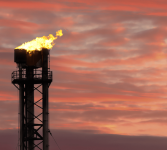2024 Greenest U.S. States Report from WalletHub
5 min read
This week, WalletHub released its 2024 report on the Greenest U.S. States, sparking a new addition to our weekend editorial at E+E Leader. Typically focused on business and corporate leadership, you’ll see us moving to embrace a few broader topics on weekends that touch on and cross over into our everyday lives as conscious consumers, community, and family members.
In our new Green Living category, we’ll start to explore themes that resonate with daily living and how to make better choices, give back, and get involved.
WalletHub’s new report, spotlighting the states leading in green initiatives, is an interesting place to start.
Understanding the Green Metrics
The report evaluates each state against rigorous criteria split across three key dimensions: Environmental Quality, Eco-Friendly Behaviors, and Climate-Change Contributions. The states were scored utilizing 25 distinct metrics, aiming to encapsulate the comprehensive impact of its green policies. From the total energy efficiency scores to the per capita methane emissions, these metrics clearly show where states stand in their environmental efforts.
The Top Three States – California, Vermont, New York
Not surprisingly, California stands out as the leader, with its progressive energy policies and substantial investments in solar power, reflecting its top rank in energy efficiency. Its robust infrastructure for alternative fuel vehicles helps mitigate traditional gasoline consumption. With the high number of droughts in California, the state also knows how to conserve and manage water resources better than most, rounding out the primary reasons behind its high score.
Vermont follows, distinguished by its extensive organic farming and the lowest carbon dioxide emissions nationwide. The state also has one of the lowest methane emissions per capita of any state, ranking third lowest, thanks in significant part to its focus on organic farming. Its high ranking in alternative fuel accessibility underscores its commitment to reducing the reliance on conventional energy sources.
New York rounds out the top three, notable for its low energy and gasoline use, facilitated by a robust public transportation system and an emphasis on green commuting methods. Almost half of the state’s residents use some form of green transport to get to school and work, whether public transport, walking, biking, or carpooling. The state also scores highly on emissions reduction per capita and amongst the lowest numbers per capita in methane, nitrous oxide, and carbon dioxide, with extensive goals to support its clean energy transition. New York also has excellent soil quality for safer crops and drinking water, with New York City’s recent urban composting initiative presenting a business model for other cities to follow.
The Bottom Three – West Virginia, Louisiana, Alabama
These states need help adopting comprehensive environmental policies and more initiatives at the state level to improve sustainability measures.
West Virginia faces significant environmental challenges contributing to its low ranking in green initiatives. Historically, its heavy reliance on coal as a primary energy source has led to extensive mining activities, which in turn have caused severe land degradation and water pollution. Issues such as mountaintop removal and the resulting runoff have damaged West Virginia’s landscapes and adversely affected the quality of water bodies, impacting aquatic life and the health of local communities. Efforts to diversify the energy portfolio away from coal have been slow, and regulatory measures often fall short of addressing the state’s full scope of environmental degradation.
Louisiana’s environmental issues are deeply tied to its industrial activities, notably in the oil and chemical manufacturing sectors. The state is part of the “Chemical Corridor,” often called “Cancer Alley,” where high levels of industrial pollution have raised significant health and environmental concerns. This area experiences some of the highest air and water pollution rates in the United States, contributing to its poor ecological quality ranking. Louisiana faces ongoing challenges with coastal erosion and wetland degradation, exacerbated by sea-level rise and natural disasters, further complicating the state’s environmental management efforts.
Alabama rounds out the bottom trio with its own set of environmental hurdles. The state has struggled with industrial pollution and inadequate waste management practices, which have led to soil and water contamination. Alabama’s policies on environmental protection have often been criticized for their lack of stringency, leading to insufficient enforcement of regulations. The state has one of the country’s lowest rates of renewable energy adoption, reflecting a broader hesitation towards embracing green energy solutions and infrastructure. This reluctance hampers progress toward improving its environmental standing and addressing the ongoing issues affecting its communities and natural resources.
Insights from Environmental Experts
To enrich the new research findings, WalletHub engaged a panel of environmental experts to explore strategies for boosting sustainability at the community level. These experts delved into the complexities of balancing ecological care with economic growth, advocating for policies that can integrate the two seamlessly.
A key question raised was: What is the most impactful thing an individual can do to reduce their environmental footprint?
Jennie C. Stephens, Dean’s Professor of Sustainability Science & Policy at Northeastern University, emphasizes the power of political engagement: “The single most impactful thing an individual can do is to get involved politically to support massive public investments in a healthy, fossil-fuel-free future for all. We need new coalitions and collective action to confront the disproportionate power and influence in US politics of those who are profiting from continued reliance on fossil fuels.”
Gaytha A. Langlois, Professor of Environmental Policy, Department of Science & Technology at Bryant University, highlights personal responsibility and civic engagement: “Examining one’s own behaviors (i.e., recycling, wastefulness, consumption, energy efficiency), coupled with holding elected and appointed officials responsible for addressing climate change by voting wisely based on the policy commitments of candidates and the issues that matter, would seem to be a good recipe for anyone.”
Weekend Reflection: Our Role in the Green Future
Where does your state rank in this list? What improvements could be made, and what are its strengths? At E+E Leader, we are committed to covering leadership across all levels—governmental, corporate, small business, personal, and consumer—because everyone and every entity plays a crucial role in shaping our collective environmental and energy future. Do you have a motivational story or a leader we should feature in our new Green Living category? Let us know here.





